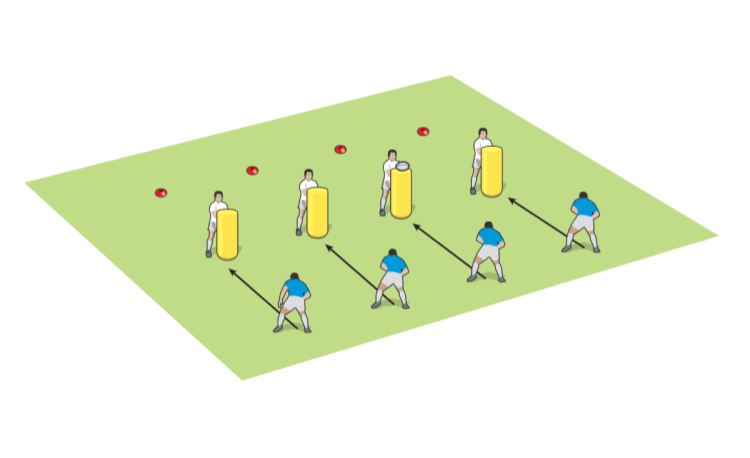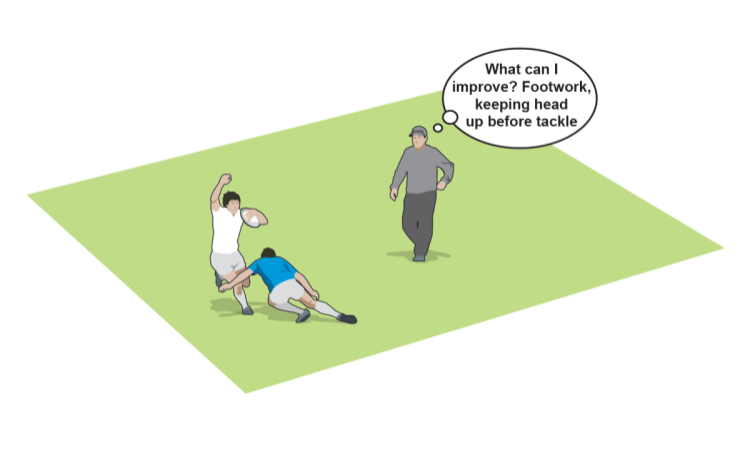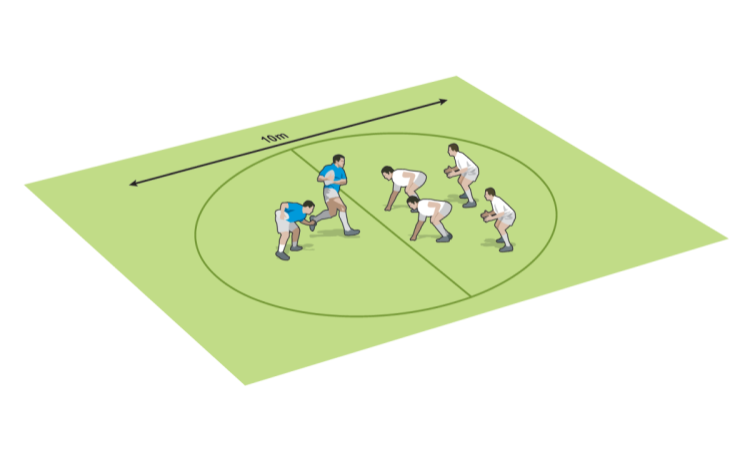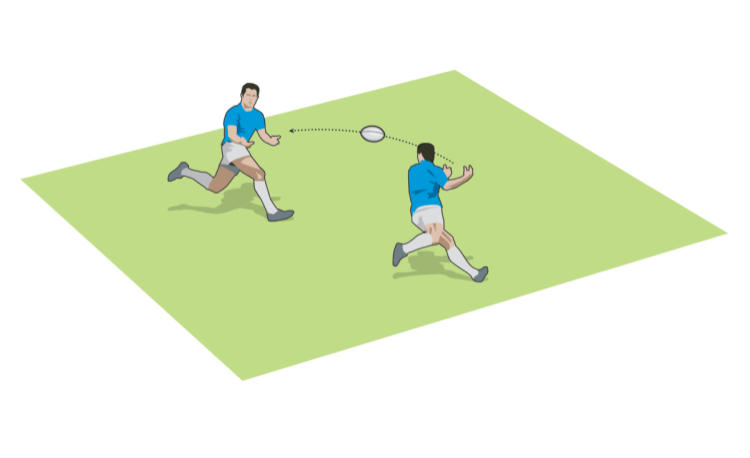You are viewing
1 of your 2 free articles
Ensure your ball poaching satisfies the referee
Tacklingby Dan Cottrell
Referees are very sharp on ball poachers who put their hands on the ground before grabbing for the ball. You must make your players whiter-than-whiter and also far more accurate in this area. It will reduce your penalty count and increase your chances of stealing the ball.
Make sure that your ball poaching is not only technically legal but also looks legal and satisfies the referee when the ball is grabbed from the tackled ball carrier.
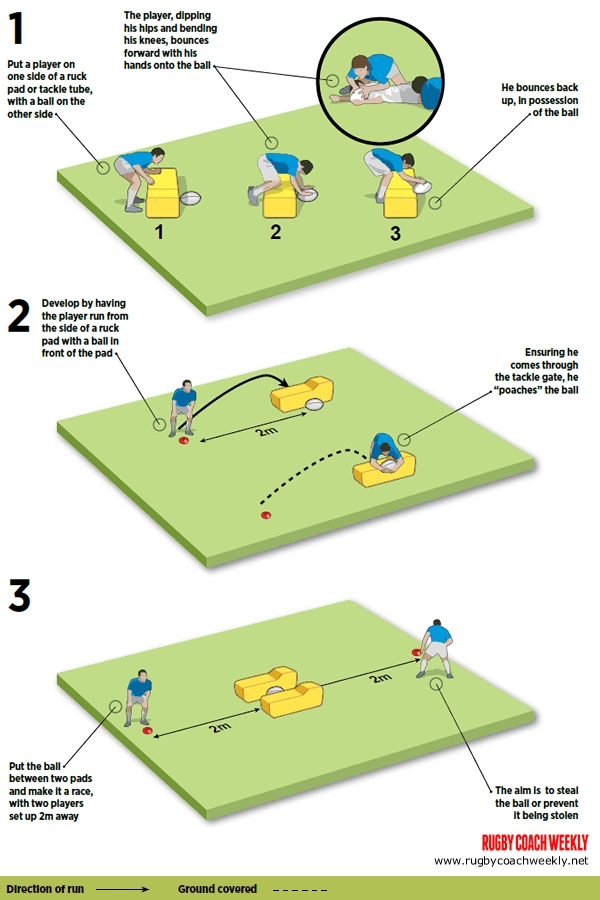
Then, get your player moving sideways and going for the ball through the tackle gate to poach it (see picture 2).
Finally, put the ball between two ruck pads so the player has to dig it out. Make it a race to see if a player can grab the ball before he is driven off (see picture 3).
Make sure that your ball poaching is not only technically legal but also looks legal and satisfies the referee when the ball is grabbed from the tackled ball carrier.
Why use it
The defender must stay on his feet and make it look to the referee that he can support his own bodyweight. He bounces onto the ball with his hands and then up.Set up
Two ruck pads (or tackle tubes), a ball and cones.
How to do it
First, have a player practise arriving at the tackle (using a tube or pad), getting low and reaching over to grab the ball. He uses a wide base, bending at the knees and hips. He needs to reach down, momentarily putting his hands on the ground before bouncing back up with the ball (see picture 1).Then, get your player moving sideways and going for the ball through the tackle gate to poach it (see picture 2).
Finally, put the ball between two ruck pads so the player has to dig it out. Make it a race to see if a player can grab the ball before he is driven off (see picture 3).
Technique
- Wide base, with knees bent
- Drop the hips towards the ground for more stability
- Reach just beyond the ball, bouncing back with the ball.
Newsletter Sign Up
Coaches Testimonials

Gerald Kearney, Downtown Las Vegas Soccer Club

Paul Butler, Florida, USA

Rick Shields, Springboro, USA

Tony Green, Pierrefonds Titans, Quebec, Canada
Subscribe Today
Be a more effective, more successful rugby coach
In a recent survey 89% of subscribers said Rugby Coach Weekly makes them more confident, 91% said Rugby Coach Weekly makes them a more effective coach and 93% said Rugby Coach Weekly makes them more inspired.
Get Weekly Inspiration
All the latest techniques and approaches
Rugby Coach Weekly offers proven and easy to use rugby drills, coaching sessions, practice plans, small-sided games, warm-ups, training tips and advice.
We've been at the cutting edge of rugby coaching since we launched in 2005, creating resources for the grassroots youth coach, following best practice from around the world and insights from the professional game.
More from us
© 2023 Rugby Coach Weekly
Part of Green Star Media Ltd. Company number: 3008779
We use cookies so we can provide you with the best online experience. By continuing to browse this site you are agreeing to our use of cookies. Click on the banner to find out more.





